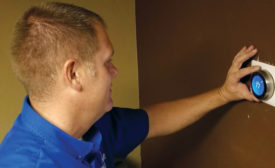Thermostats
In a World of Connected Devices, Thermostats and Controls Are the Key to Success
How well do you know HVAC stats?
Read More
Contractors Use Smart Sales for Smart Homes
HVAC contractors, manufacturers share how to close the deal
Read More
Control and Reliability Earn DunAn Microstaq DDA Gold Recognition
Lennox, Emerson round out this year’s light commercial category winners
Read More
Easy Installation, Use Highlight Residential Controls Offerings
Nest takes gold for its Nest Thermostat E + Nest Temperature Sensor
Read More
Time to Recommend Comfortable, Efficient Hydronic Technology
Consider new, programmable thermostats with Wi-Fi capabilities, too
Read More
Copyright ©2024. All Rights Reserved BNP Media.
Design, CMS, Hosting & Web Development :: ePublishing














